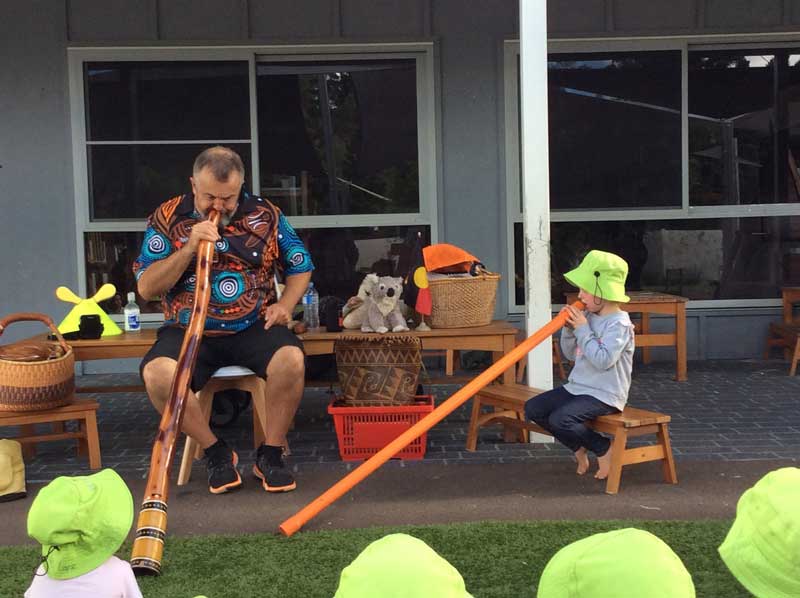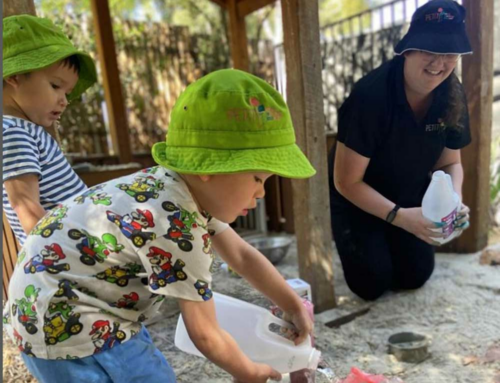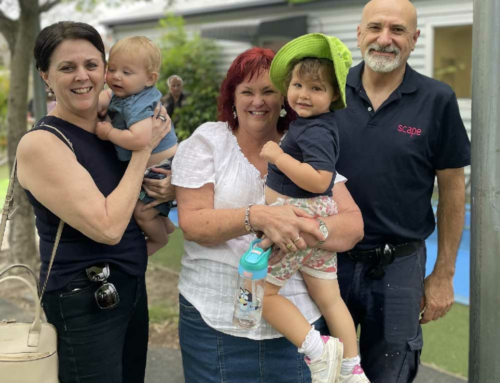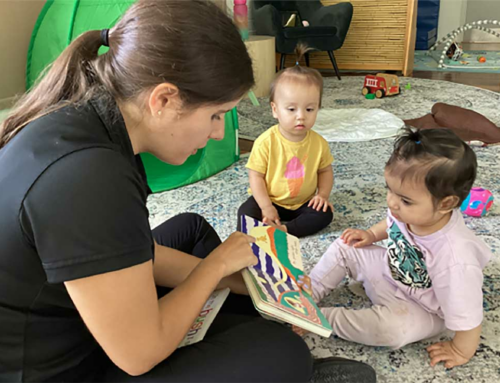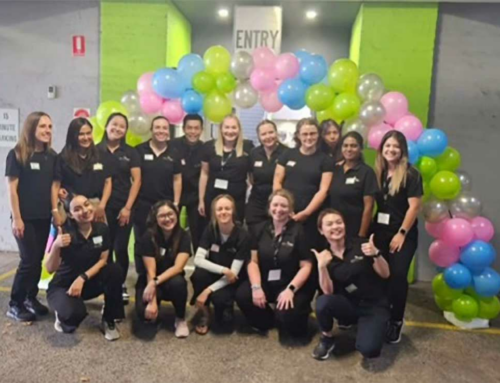When we dig deep into the cultures of our home, embedding authentic Aboriginal and Torres Strait Islander perspectives into our early childhood curriculum and learning program, we strengthen all children’s sense of belonging and identity.
For Indigenous children, embedding Indigenous perspectives supports the value of their culture and increases engagement. For non-Indigenous children, it encourages respect for the histories of the First Nations peoples and a genuine understanding of the land we live on.
This article explores the importance of embedding local Indigenous perspectives into our Petit Early Learning Journey centre’s learning programs. Petit ELJ Murwillumbah, Petit ELJ Coffs Harbour, share their experiences and reflect on:
- Why is it important to include Indigenous perspectives?
- How do you incorporate local Indigenous knowledge into the learning program?
- Examples of embedding First Nations perspectives
- Understanding the culture and context of Aboriginal and Torres Strait Islander children
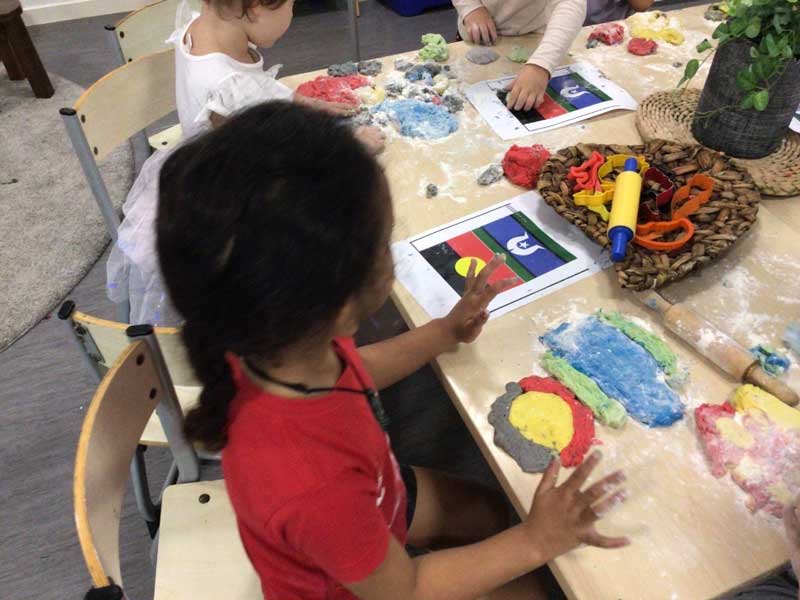
Why is it important to embed Indigenous perspectives
“When time is taken to develop further our collective knowledge and understanding of Aboriginal and Torres Strait Islander perspectives, all of our children and families benefit.”
– Connecting the dots through Culture (Ranu James, Jackie Bennett, Cecelia Wright, 2021).
“Every child, family, staff member and visitor walks through our door with their own unique worldview,” says Karin Hill, Educational Leader at Petit ELJ Murwillumbah. “As educators, we have the unique ability to share these views on a broader community scale.
“Celebrating the different lenses through which we view the world provides an authentic environment for being, belonging and becoming.”
“At Petit ELJ Coffs Harbour,” says Alex O’Sullivan, Centre Director, “we believe it is important to embed Indigenous perspectives as they are our Nation’s First People, and we are living on their land. We believe connection to country is vital for children as it teaches them about being respectful to the land and how we can preserve this connection.”.
“We live in a diverse community in Coffs Harbour, and it is vital for children to understand and acknowledge the cultures and beliefs surrounding them, particularly those of the Gumbaynggirr people.”
Jet Dayang, Educational Leader from Petit ELJ, adds, “By embedding cultural learning:
- We learn about the vibrant and diverse cultures of First Nations People.
- We support Indigenous children’s sense of identity and belonging.
- We promote a culture of understanding towards cultural diversity.
- We build positive relationships with our local Indigenous communities.
- We create a culture of respect.”
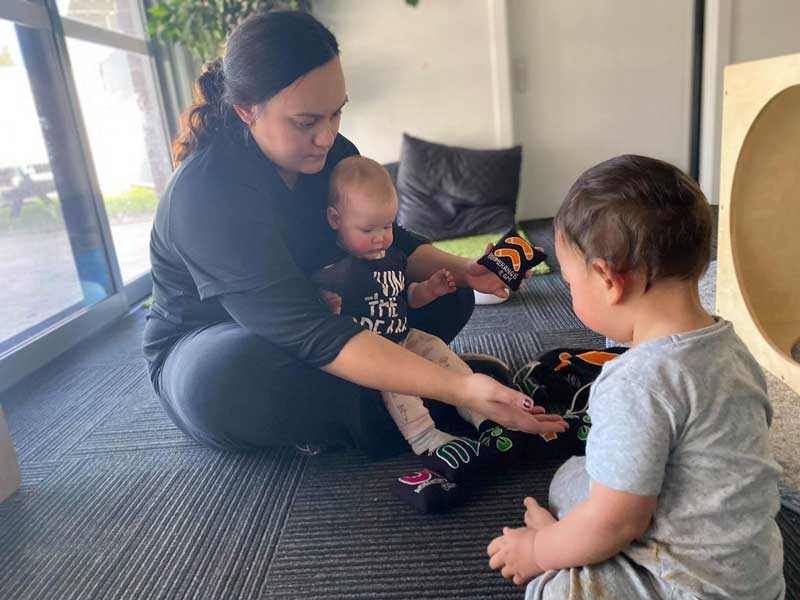
How do you incorporate local Indigenous knowledge into the learning program?
“Children’s connectedness and different ways of belonging with people, country and communities helps them to learn ways of being which reflect the values, traditions and practices of their families and communities. Over time this learning transforms the ways they interact with others.”
-BEING, BELONGING & BECOMING The Early Years Learning Framework
“At Petit ELJ,” says Jet, “we build connections between the early childhood setting and the local community. We connect to people and community groups with knowledge and expertise on our local culture to develop a sense of belonging that leads to active community participation.”
“Incorporating Indigenous knowledge into our daily practice at Petit ELJ Coffs Harbour is an ongoing goal of our centre,” says Alex. “We work in collaboration with Bularri Muurlay Nyanggan, delivering Indigenous language lessons to our preschool room.”
“We aim to embed Indigenous culture into our daily practice by creating rituals such as our Acknowledgement of Country. In addition, we seek new ways to better understand and implement Indigenous knowledge and culture into our program.”
“During our journey at Petit ELJ Murwillumbah,” says Karin, “we have sought local Indigenous knowledge through a range of strategies and through developing authentic connections. We have done this by:
- Inviting local Elders into our service.
- Going on excursions to local sites of cultural significance with Elders.
- Visiting the local Indigenous museum as an excursion with the children.
- Reaching out to various organisations and community members via email, phone and visiting.”
“Local knowledge is woven through our centre. From the minute you walk through the door, you are greeted with displays on incursions and the local Bundjalung language. “Koori Mail”, local Indigenous newspapers, are available in our foyer, our hallway celebrates Indigenous heroes, and our studios incorporate Indigenous artefacts, music, artworks, flags and provocations for children to explore.
“We also include local bush tucker in our garden, and our morning routine hangs on a morning greeting that Acknowledges the Bundjalung people, the traditional custodians of the land on which we play and learn.”
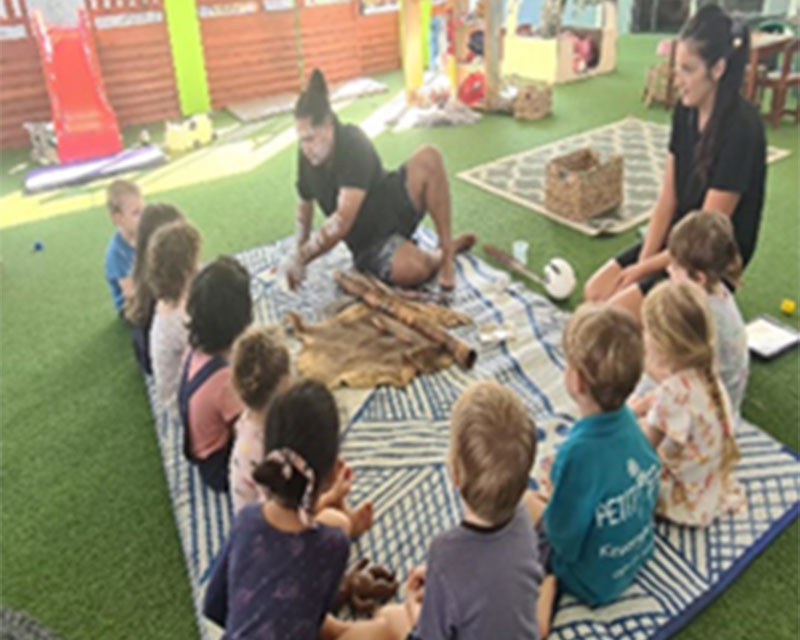
Examples of Indigenous perspectives within our services
Petit ELJ invites local Indigenous families to share stories and cultural experiences
“Recently, we invited one of our families to participate in our learning program during National Reconciliation Week,” says Jet. “Our children broadened their understanding of the world in which they live as they listened to Davinder about Aboriginal culture and way of life.”
“The children participated in different experiences such as playing musical instruments like dancing boomerangs and clap sticks, exploring the kangaroo skin’s texture, performing the emu dance, and using ochre for body painting.”
Petit ELJ Coffs Harbour reflects the Aboriginal Pedagogy: 8 Ways of Learning
“Our learning program includes information and ways of knowing local First Nations peoples,” says Alex. “Aboriginal and Torres Strait Islander perspectives can be seen, heard and felt as you enter our studios.”
“We have local artwork displayed on our walls, we practise our Acknowledgement of Country each day, and our educators are constantly implementing experiences that reflect the culture and perspectives of our local First Nations peoples.”
“Our service seeks to constantly engage in meaningful professional conversations with community members, to support a learning program that reflects the Aboriginal Pedagogy: 8 Ways of Learning. We hope that over the coming months and years, we continue to develop skills in implementing this way of learning.”
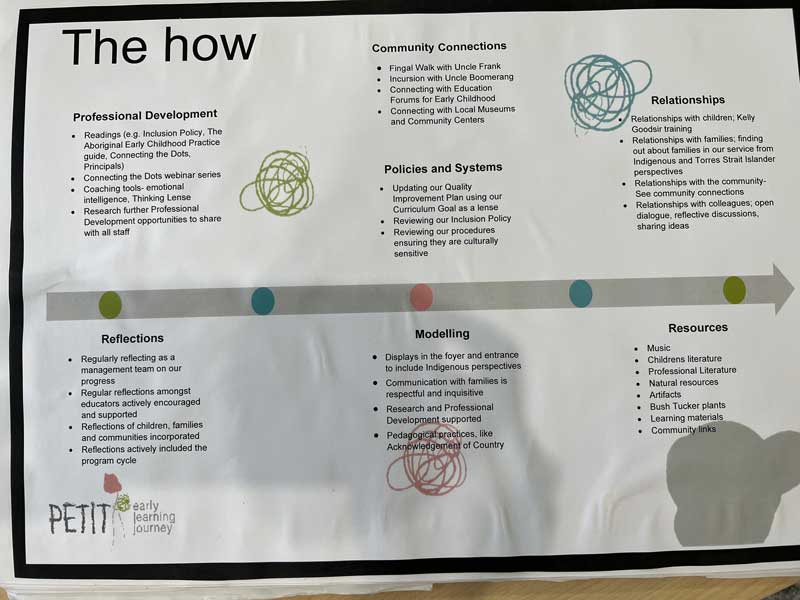
Petit ELJ Murwillumbah recorded their journey to embed Indigenous perspectives in a ‘floor book’
“In 2021, our centre goal was to Embed Indigenous Perspectives throughout our centre,” says Karin. “We began our journey by creating the goal and a working document, our ‘floor book’. This was a place where we looked at our rationale, thought about how we were going to achieve our goal, and wrote a vision of what it would look like, sound like and feel like when we achieved our goal.”
“It was a place where we recorded our community connections and made reflections on our incursions, excursions and professional development. In our floor book, we gathered photos of our displays, examples of local languages and an explanation of our celebration of Floral Fridays.”
Understanding the culture and context of Aboriginal and Torres Strait Islander children
“Being respectful to the cultures in the centre is of utmost importance,” says Karin. “First, we collaborate with the children and their families to ensure we understand their culture and then proceed to embed these practices within our centre.”
“With the educators constantly developing an understanding of Aboriginal and Torres Strait Islander culture we can then use this to approach families and encourage those families and children to be a part of our journey while also helping us grow.”
“With support from our families and educators’ understanding, we then extend this knowledge to all the children and families within our service.”
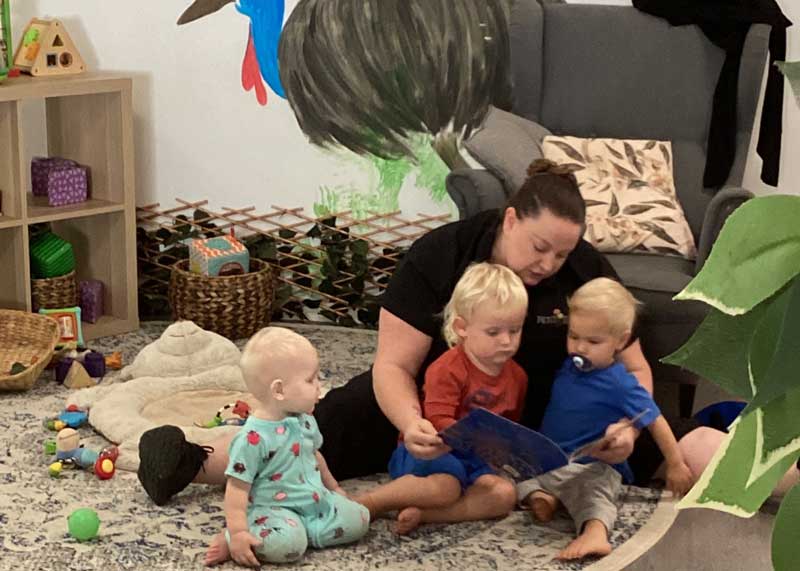
Inspire children’s understanding of culture with Petit Early Learning Journey
Do you share an appreciation for other cultures? At Petit ELJ we believe all families are diverse, unique and come with different values and aspirations. We feel it is important to listen to families about what matters most to them and to hear the cultural context and rich stories their children bring.
As an educator at Petit ELJ you are entrusted with building genuine relationships with all our families. We also recognise your unique family culture encouraging our teams to share and celebrate their diversity. Be part of a supportive community of like-minded individuals who call Petit ELJ their home away from home.
